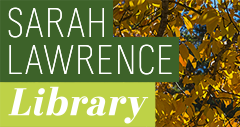To access this thesis, you must be either on the campus of Sarah Lawrence College or have a valid MySLC login and password.
Date of Award
5-2024
Document Type
Thesis - Campus Access Only
Degree Name
MS in Dance/Movement Therapy
First Advisor
Elise Risher
Abstract
Utilizing Liberation Psychology’s assertion that mental health exists in a social and relational dimension as a critical frame, this paper examines how dance/movement psychotherapists can enter therapeutic work from the under as a means of accessing germinal material for creative restoration. Central to this process is the facilitation of liminal spaces in which narratives may be revised. This paper connects the notion of “liminality” found in underground spaces to the “potential” therapeutic space – the affectual in-between where new meaning is created. Vibrating yet unseen, The Underground honors the essence of the fugitive, the deviant, and the transgressive. Kinetic melodies such as movement, vibration, rhythm, and enactive co-creation are the building blocks for interaffective exchange and are present in both The Underground and the potential space. Given that interaffective exchange is where meaning is cultivated, psychotherapeutic work focused on un-relating from dominant cultural paradigms is strengthened through accessing this in-between space where relational components can be re-imagined. Doing so disrupts hierarchical, Western psychotherapeutic paradigms by tapping into shared resonant experience rather than imploring rigid prescriptive interventions. Thus, dance/movement psychotherapy provides a unique portal to the liminal, and the framework of The Underground may allow the dance/movement psychotherapist to access a critical embodiment – one that works relationally, resists pathology rooted in individual blame, and utilizes kinesthetic modalities to encourage neuronal plasticity.
Recommended Citation
Sotelo, Jennifer Carmen, "Gifts from The Underground: Co-Creating Subaltern Zones of Liminality in Dance/Movement Psychotherapy" (2024). Dance/Movement Therapy Theses. 103.
https://digitalcommons.slc.edu/dmt_etd/103


